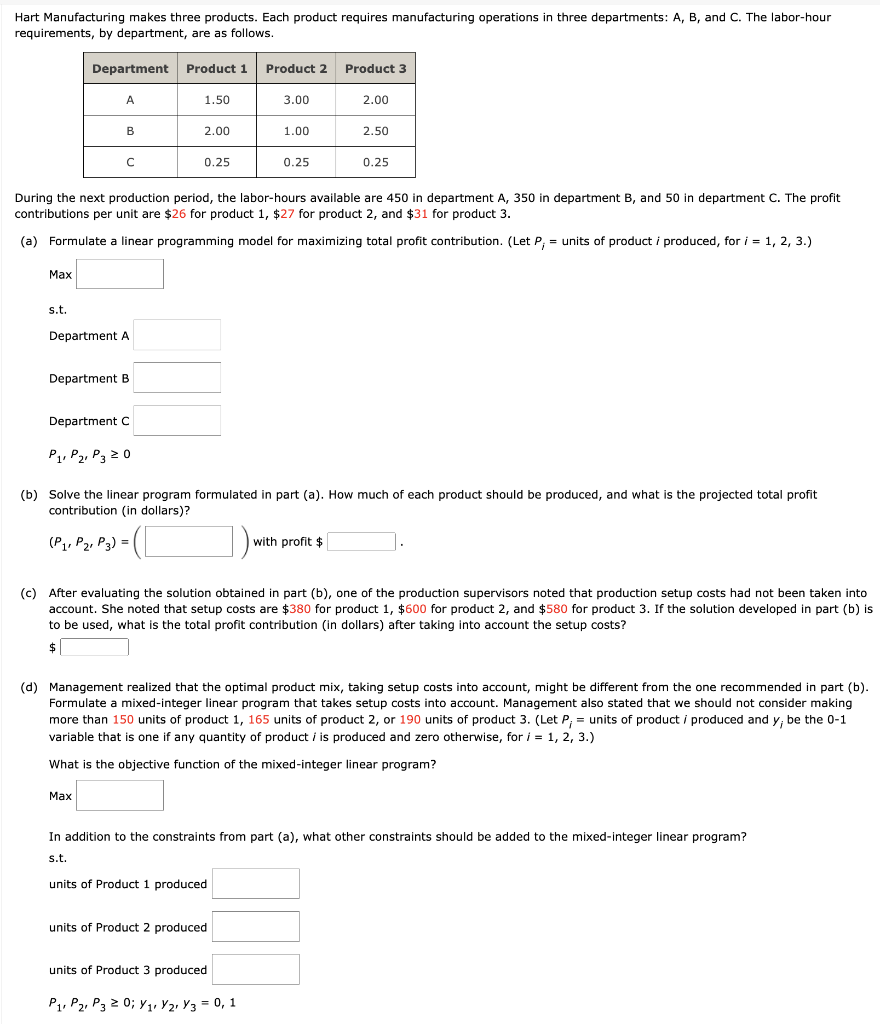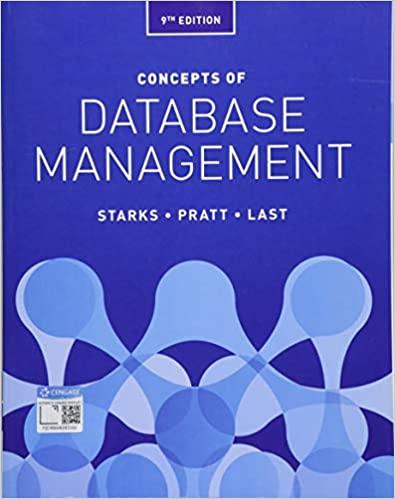

Hart Manufacturing makes three products. Each product requires manufacturing operations in three departments: A, B, and C. The labor-hour requirements, by department, are as follows. During the next production period, the labor-hours available are 450 in department A, 350 in department B, and 50 in department C. The profit contributions per unit are $26 for product 1,$27 for product 2 , and $31 for product 3 . (a) Formulate a linear programming model for maximizing total profit contribution. (Let Pi= units of product i produced, for i=1,2,3.) Max s.t. Department A Department B Department C P1,P2,P30 (b) Solve the linear program formulated in part (a). How much of each product should be produced, and what is the projected total profit contribution (in dollars) ? (P1,P2,P3)=(withprofit$ (c) After evaluating the solution obtained in part (b), one of the production supervisors noted that production setup costs had not been taken into account. She noted that setup costs are $380 for product 1,$600 for product 2 , and $580 for product 3 . If the solution developed in part (b) i to be used, what is the total profit contribution (in dollars) after taking into account the setup costs? $ (d) Management realized that the optimal product mix, taking setup costs into account, might be different from the one recommended in part (b). Formulate a mixed-integer linear program that takes setup costs into account. Management also stated that we should not consider making more than 150 units of product 1,165 units of product 2 , or 190 units of product 3 . (Let Pi= units of product i produced and yj be the 0 -1 variable that is one if any quantity of product i is produced and zero otherwise, for i=1,2,3.) What is the objective function of the mixed-integer linear program? Max In addition to the constraints from part (a), what other constraints should be added to the mixed-integer linear program? s.t. units of Product 1 produced units of Product 2 produced units of Product 3 produced P1,P2,P30;y1,y2,y3=0,1 In addition to the constraints from part (a), what other constraints should be added to the mixed-integer linear program? s.t. units of Product 1 produced units of Product 2 produced units of Product 3 produced P1,P2,P30;y1,y2,y3=0,1 Solve the mixed-integer linear program formulated in part (d). How much of each product should be produced, and what is the projected total profit (in dollars) contribution? (P1,P2,P3,y1,y2,y3)=(withprofit$








